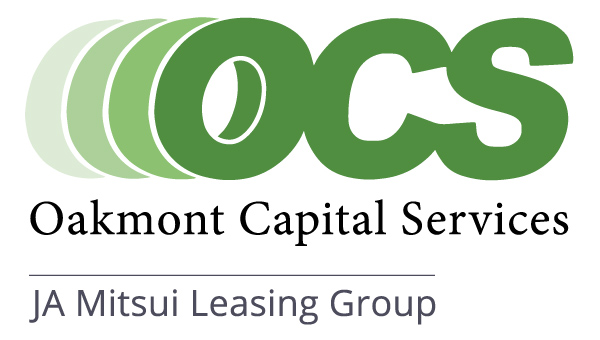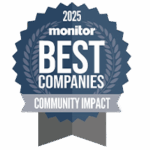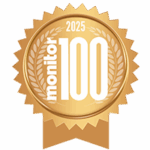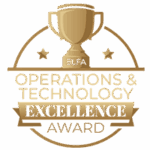At Oakmont Capital Services, we’ve been assisting businesses with securing financing for over 20 years. During that time, we’ve advised clients on the best way to finance equipment and have also helped to educate them on the process. Below are a few “must ask” questions when it comes to financing equipment and important information to understand before borrowing.
What is the APR?
The term annual percentage rate, or APR, is a way of measuring the full cost a lender charges per year for funds. APR combines the total amount of interest payable and the cost of other fees and charges averaged over the term of the loan and expressed as a percentage. APR is more complex than the “rate” on a loan and it’s important to understand both numbers.
A rate by itself may sound reasonable (like 5.9%), however, the actual APR is significantly higher. Additionally, both APRs and interest rates can be variable or fixed, depending on whether they are tied to changes in benchmark rates.
Before making a decision on a loan, take the amount being financed and the APR that the representative provides and verify the APR with an online payment calculator, such as a mortgage or auto payment calculator that can be found online.
Are there any upfront costs?
There are three types of fees that might be charged upfront when it comes to a loan: commitment fees, closing costs, and document fees.
Some financing companies require a good faith deposit or commitment fee prior to or just after the approval process. However, collecting a fee prior to the borrower receiving the finance documents is unethical or in some states, illegal. Often there is a fee for financing an amount of $300,000+ as there may be more credit due diligence required.
In addition to commitment fees, closing costs are sometimes charged, especially if bank financing is involved. Many banks will charge a 1-point (or more) closing fee. Since this fee is not amortized as part of the loan, it does not affect the APR. However, it does affect the total cost to the borrower. Every point that is collected has an effective cost of nearly 50 basis points or a ½ point increase in APR.
The third type of upfront cost is the documentation (or doc) fee. Finance companies charge a doc fee to help them offset the cost of credit pulls, UCC/Titling filing fees, wire transfer charges, inspection and appraisal fees, plus overnight package delivery. Doc fees generally range from as low as $150 to as high as $750. Doc fees should be collected at the time of signing the finance contracts and not before.
What is the pre-payment policy?
The standard pre-payment policy in the equipment finance industry is commonly called 5-4-3-2-1. This assumes a 5-year term and discounts the remaining stream of payments when an early payoff is requested. An example calculation looks like this:
- In the first year of a 5-year note, the payoff is the remaining principal balance at the time of the payoff plus 5%.
- In year two, the payoff is calculated as the remaining principal balance at the time of payoff plus 4%.
- This cycle repeats for the duration of the loan: year three is 3%, year four is 2% and in year five is 1%.
Shorter and longer terms have a similar payoff calculation. For instance, a 36-month loan may have a payoff calculation of 5-3-1. Many finance and leasing companies do not discount their pre-payments; instead, they quote the remaining stream of payments. This is a key question to ask as the prepayment policy also applies to insurance losses, so understanding these terms before signing a loan agreement is beneficial.
How is the financing being secured?
It’s critical to understand the type of “lien” that will be filed when securing financing, which is necessary when financing a piece of equipment or other assets. The lender will file a lien on the collateral, which requires that the equipment be worth the amount of the loan or less. Some bank and finance companies do not just secure the equipment being financed, instead, they file a blanket lien on the borrower.
A blanket lien secures all the assets owned by the borrower including bank accounts, account receivables, and equity in other assets including real estate and equipment. This type of lien allows a bank or finance company to provide a lower interest rate because they have more than 100% collateral value. The downside of a blanket lien filing is that the borrower does not amass any “lien free” assets. In this scenario, if the borrower wants to sell an asset, he or she needs to obtain the lenders’ permission.
How important is it to get terms in writing?
When going through the loan approval process, often a proposal is reviewed early on, which does not reflect the actual approved terms since the credit process has yet to take place. At this stage, it’s permittable to not have everything in writing. However, once financing has been approved, the terms should be clearly communicated to the borrower. If the Credit Department has approved the finance request, then all the terms will be available to the representative. If the financial terms are not put in writing, it’s recommended to walk away from the deal.
Keep these “5 Questions” in mind when seeking financing for commercial equipment to ensure you understand APR, upfront costs, pre-payment policy, and more to obtain the right loan for your business. Have additional questions? Don’t hesitate to contact an Oakmont Capital Services experts at info@oakmontfinance.com or call 877-701-2391.










